The use of honeysuckle honeysuckle in landscape design
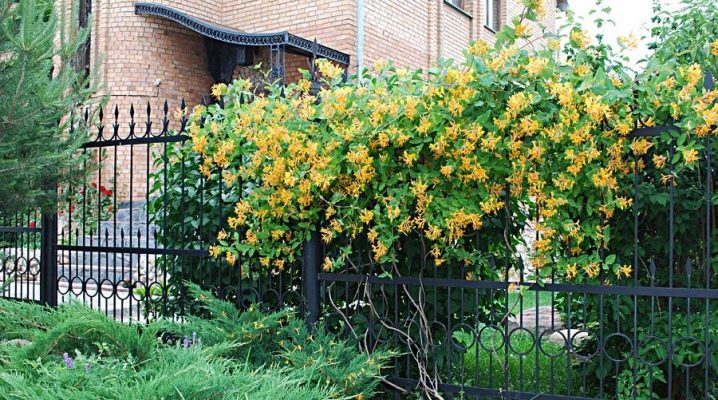
Honeysuckle honeysuckle is very popular with gardeners around the globe. This beautiful liana is distinguished by its unpretentious care and high decorativeness. It is prized for its fragrant bright flowers, dense green foliage, and a magnificent view in spring, summer and autumn. Often used for vertical landscaping in landscaping.

Variety selection
Honeysuckle honeysuckle is a liana-like ornamental plant with dense bright green leaves, spectacular flowers and very beautiful fruits. Deciduous climbing shrub reaches a height of 6 m. Liana can grow in any direction. It blooms for 3 weeks with medium-sized flowers collected in a brush, spreading around a pleasant characteristic aroma reminiscent of the scent of jasmine. Fragrant inflorescences attract many bees and butterflies to the site. In place of flowers, red or orange berries are formed, collected in 3-4 pieces in the middle of a rounded leaf. The fruits of honeysuckle, honeysuckle, are unsuitable for food.
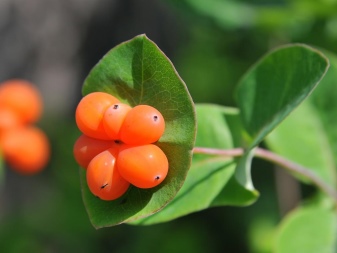
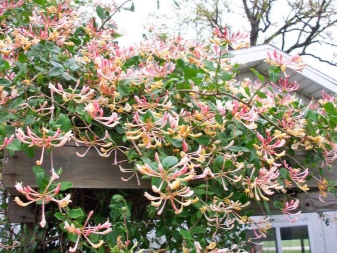
The variety is distinguished by a high growth rate (during the season the shoots grow up to 3 meters) and unpretentiousness - the plant requires minimal care: watering, formative pruning, feeding. It is important to take into account that for vertical growth, a high support is required, along which the shoots will climb.
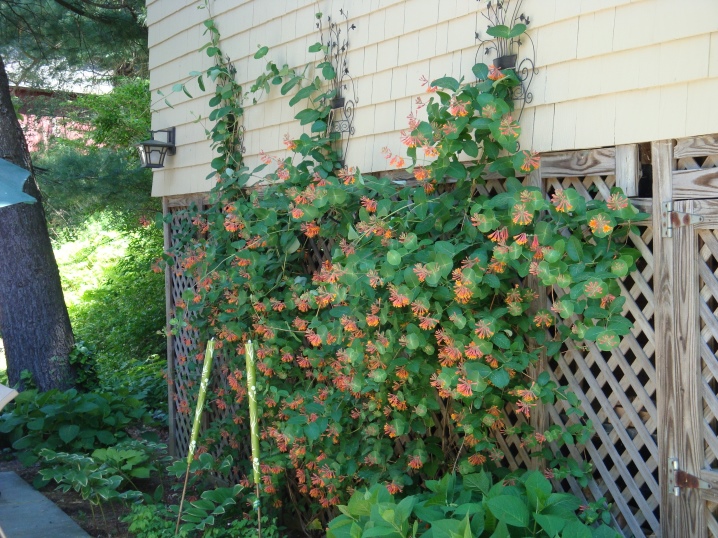
One or two walls of a building, a fence, a tall tree, an arch, a pergola can serve as a support.
Thinking over the design of the personal plot, many owners strive to decorate buildings and fences, create a cozy and beautiful atmosphere. Porch, fence, garage - any of these buildings can be made more neat and aesthetically pleasing by planting curly views next to them. An unsightly corner can become a favorite vacation spot if you approach it intelligently and creatively.
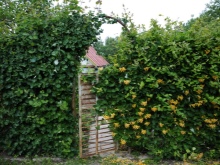


Honeysuckle is a very good option for landscaping new sites that do not yet have tall trees and lush shrubs. Blooming perennial tree-like vines will help create a beautiful decoration in the garden, disguise unsightly places, make a gazebo or terrace cozy.

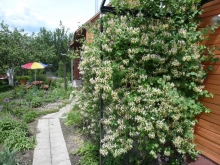
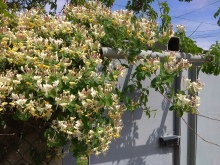
Here are the most popular varieties of honeysuckle for gardening.
-
"Alba" - is distinguished by long shoots and good growth of the green crown. Reaches 5 m in length, blooms in the 3rd year. It blooms with large white-yellow tubular flowers from late May to June. Used for vertical landscaping and hedges. Lifetime with good care is up to 10 years.

- "Passionflower" - reaches a length of 6 m, blooms with pale pink inflorescences. They are used in landscape design for draping fences and household buildings, decorating garden pavilions.
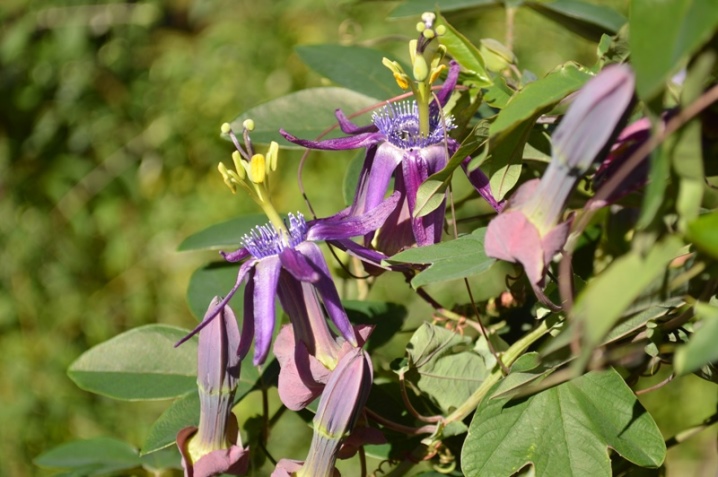
- "Inga" - is considered the most beautiful and fragrant species. It grows up to 3 m. Differs in abundant flowering, tubular flowers are collected in inflorescences, their shades are very diverse: yellow, cream, pink. Used for single and group landings.
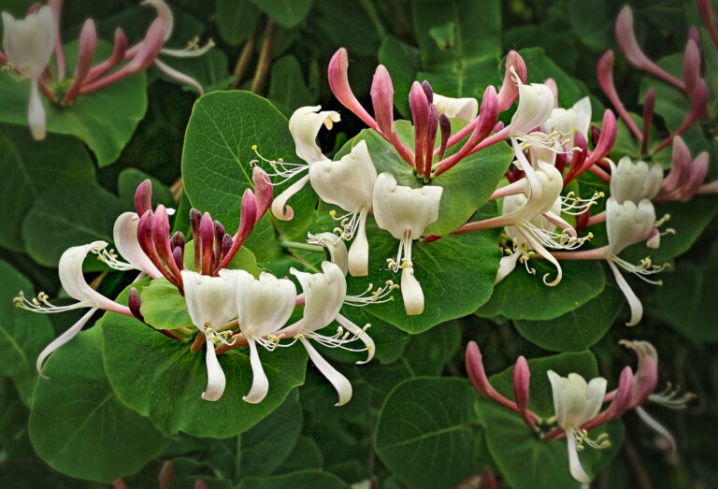
- Belgica Select Is a plant with wide green leaves, blooms with purple and pink flowers, from which a huge number of red berries appear in the fall. It grows well in the sun and in partial shade, blooms magnificently in May, but continues to form buds from June to September.

- "Harlequin" - This is a variety with variegated leaves: the color of the leaf plate is green, and pale yellow stains are scattered around the edges. It blooms with pale pink flowers. The variety loves the sun, it is often used to decorate gazebos, arches, and fences.Reaches a height of 3.5 m.
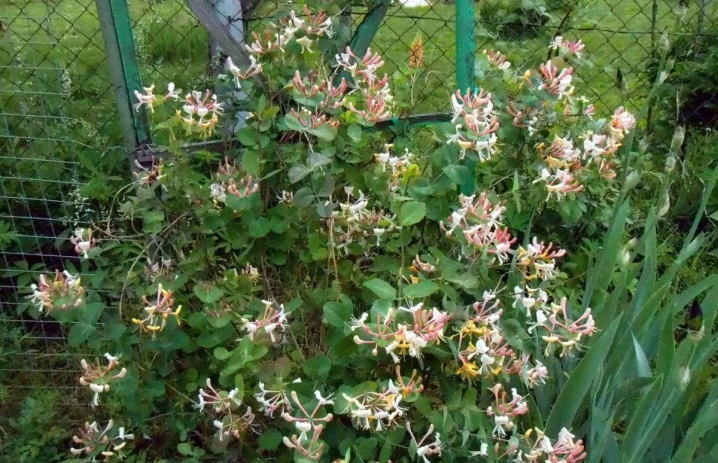
- Graham Thomas - grows up to 4 m, in a year it can grow by 2 meters. The leaves are oblong dark green, turn yellow in autumn. Blooms profusely and for a very long time. The flowers are white, with a bright pleasant aroma, when blooming, they change color to yellow.
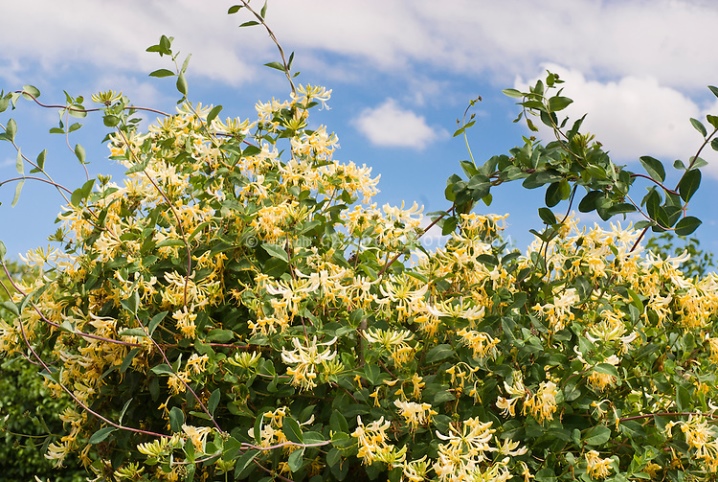
- "Hecrotta American Beauty" - this hybrid variety grows up to 3 meters in length, is frost-resistant up to -25. Large inflorescences reach 8 cm in size, they are white, purple or yellow, almost odorless.
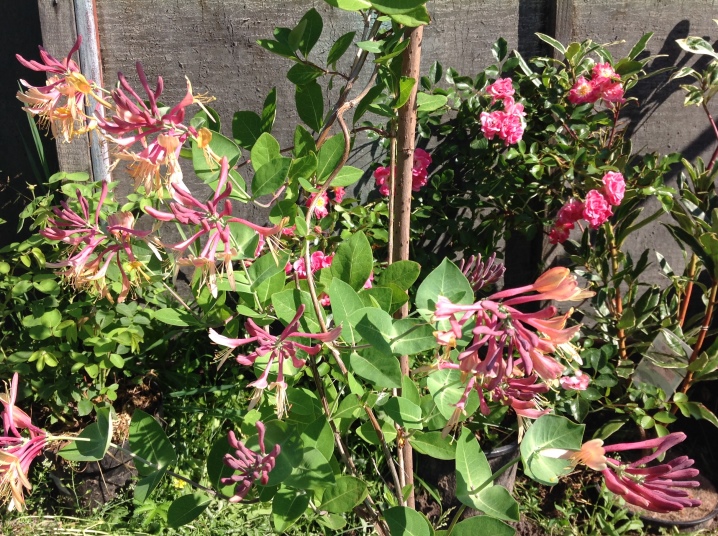
How to use
The main advantage of honeysuckle honeysuckle is the ability to braid huge areas in a short time. For planting, you can choose a variety of optimal height, with leaves, flowers, fruits that are suitable in shape and color.
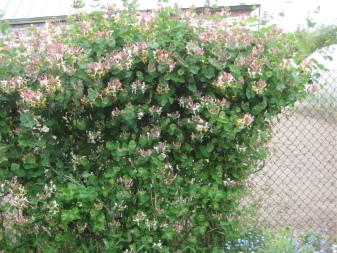
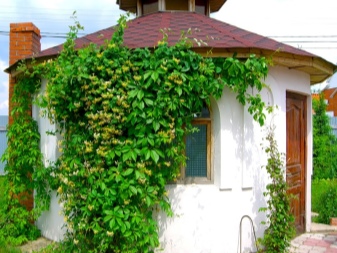
Lianas are easy to cut and shape according to the general landscape composition plan.
For each bush, you need to make a support, and carefully fix the shoots. Usually it is enough to weave them into wide mesh cells, but sometimes they need to be tied with soft braid. The external decorative appearance of the entire plantation depends on how evenly and carefully the lash will be distributed on the props. The plant itself will climb the support, the gardener will only need to direct the lashes in the right direction.
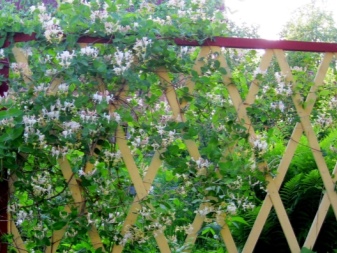
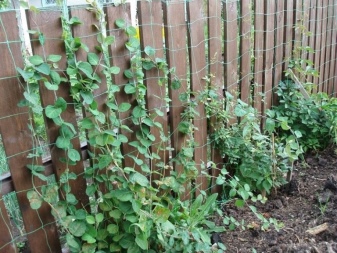
Accommodation options.
-
Single landing - in this form, honeysuckle honeysuckle looks spectacular. The shrub is able to decorate the site for the entire season. If planted next to hawthorn, cherry plum, hazel, actinidia, you can create a beautiful and safe neighborhood. It is not recommended to plant near red and black currants.
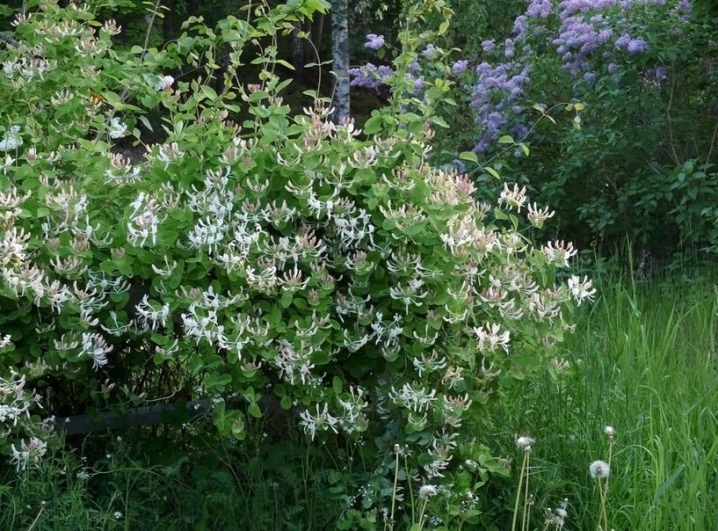
- Near the house - green lashes with flowers will be an excellent decoration for a porch, veranda or terrace, and if you plant a variety near a bench, you get a cozy seating area. Lianas are allowed through special nets from the wall to the fence or from the flower bed to the roof of the terrace, thus creating a kind of vegetable canopy.
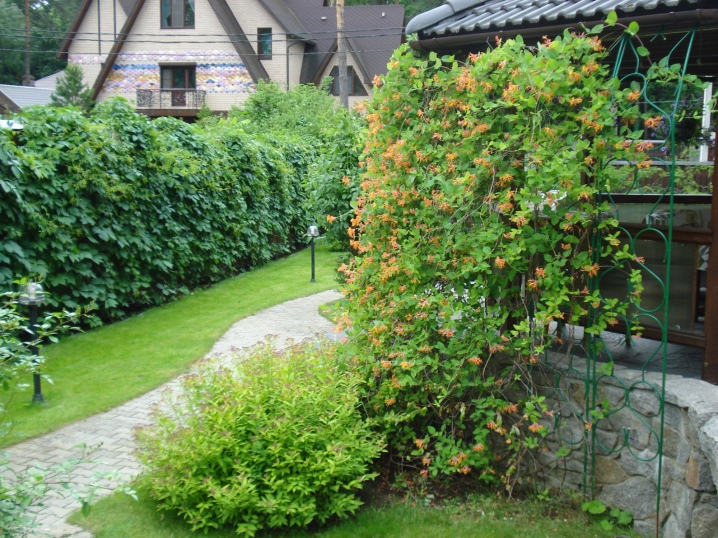
- On the fence - bushes are placed around the perimeter of the entire site along the fence, this helps to close unsightly walls and create a cozy atmosphere inside the yard. Can be combined with other species: clematis, wild and evergreen grapes, climbing nasturtium.
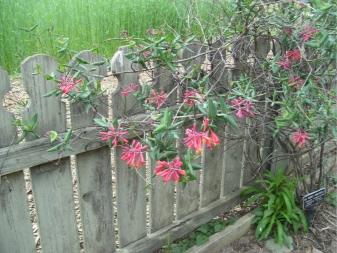
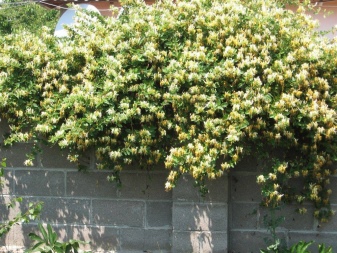
- On the arch - this is one of the most popular ways of placing honeysuckle, so it does not take up much space in the garden, and it turns out to be very decorative in appearance. Several arches, placed in a row above the garden path, will look picturesque in the design of greenery. Especially if you pick up different varieties, contrasting in the color of the buds.
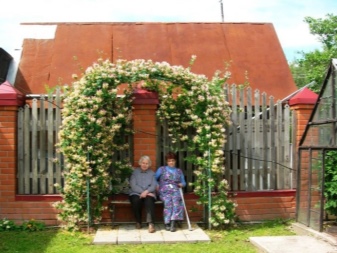
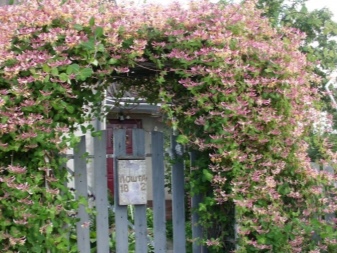
- Hedge - a bush planted near a chain-link netting or a lattice fence will grow into a green cover in a few years. In this way, you can disguise a garage, a concrete fence, separate a path or a parking space. If you run a vine on a trellis or trellis, you can zone the space on the site, creating cozy corners and hiding unpresentable places. An excellent option for zoning a garden or creating an English-style park.
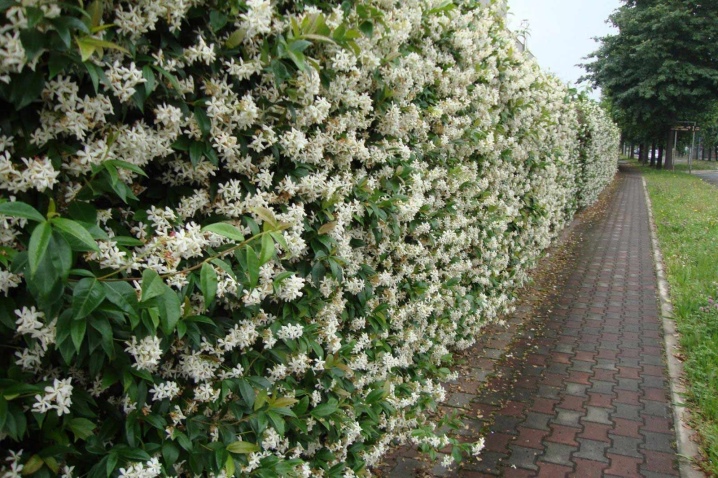
- Without support - by planting a plant like this, you can get a luxurious floral carpet 30-100 cm high.
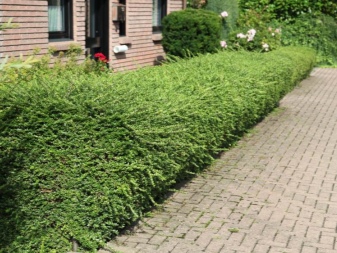
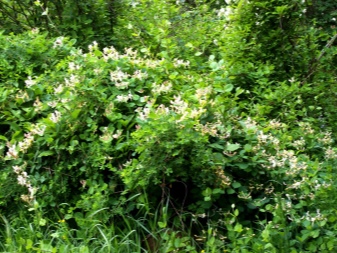
- Diverse landscape composition. To create a shrub-woody group on the site, you can plant it next to coniferous trees - juniper, thuja, pine and shrubs - mock orange, weigela, action. You can place the variety in the center of the flower bed near the trellis in the vicinity of hydrangea, climbing rose, clematis, but it is not recommended to plant bulbs next to it. The bush will serve as a decoration not only in summer, but also with the onset of autumn, when the leaves turn yellow.
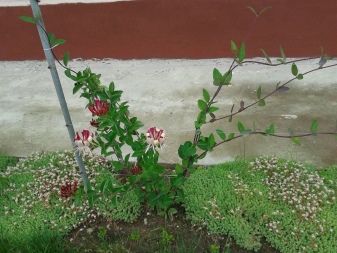
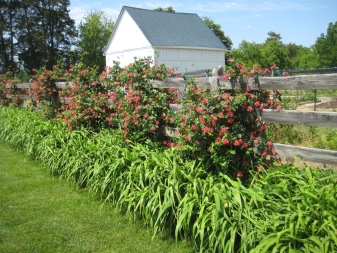
Suitable for stony slopes or small hills: the roots protect the soil from erosion - dwarf varieties are preferred.
Nuances of formation
The most often used honeysuckle honeysuckle for vertical gardening of the site.Where to plant this beautiful variety, each gardener chooses independently. For some, it will be ideal to surround the gazebo with fragrant flowers, while for others it is a great opportunity to hide the gray wall of the extension. For landscaping to look aesthetically pleasing and tidy, it must be properly designed. For this, a young bush begins to form from the first year of planting - if this is not done, the side lashes will begin to curl along the main shoot, and all decorativeness will be lost.
To create a decorative form, be sure to select a solid support: wood or metal, a nylon mesh is also suitable.
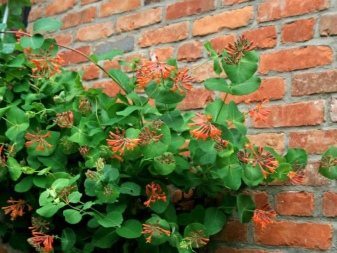
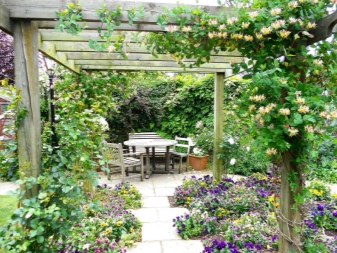
The plant is recommended to be cut 3 times per season.
The first time - until the buds swell, the frozen shoots are removed, and the healthy ones are cut to the required length. The shrub is given a uniform shape:
-
ball,
-
columns,
-
walls,
-
hedges,
-
curb.
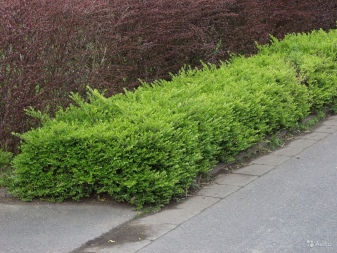
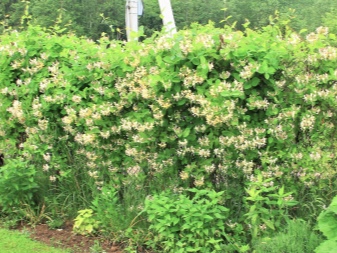
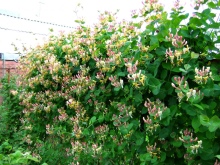
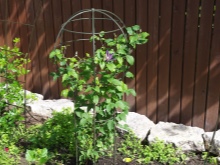

It takes some experience to create a clear decorative shape, but everyone can give the planting a neat and beautiful look if desired. It is enough to remove weak and broken shoots in the spring before the start of sap flow, and cut healthy ones by no more than 1/3 and carefully place them on a support.
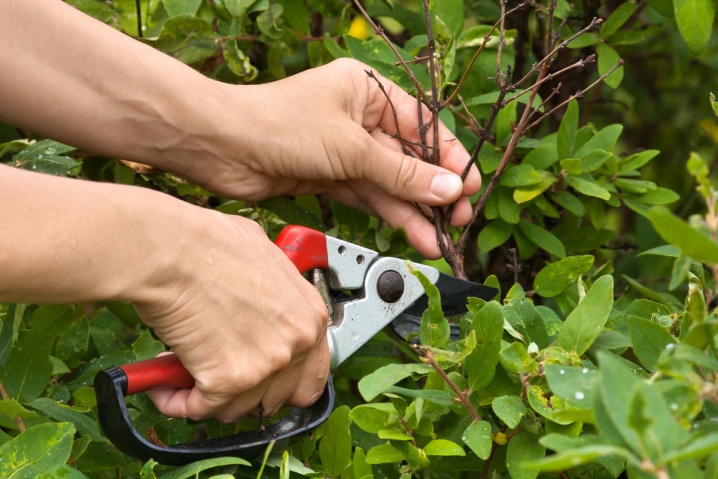
The second time is in the middle of summer, after the end of flowering and the growth of the total green mass. Remove branches that have gone beyond a single shape.
The third time - after the end of the leaf fall, the damaged, dry and weak branches are removed.
If the bush is bare at the bottom to hide empty spaces, they stimulate the growth of the lower lateral branches and plant low types of flowers: climbing nasturtium or Iberis.
A few tips for pruning.
-
In adult bushes, old shoots are removed and new shoots are thinned out.
-
In a young liana, 3 of the strongest whips are left, the rest are removed.
-
When the desired height is reached, the tops are trimmed.
-
To stimulate the growth of lateral branches, the rest are pruned.
-
To stimulate flowering, it is recommended to prune branches at a height of 10-15 cm from the ground.
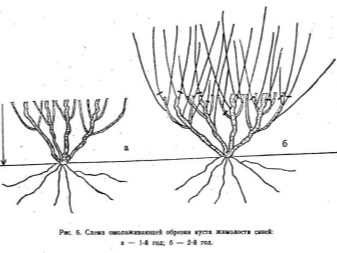
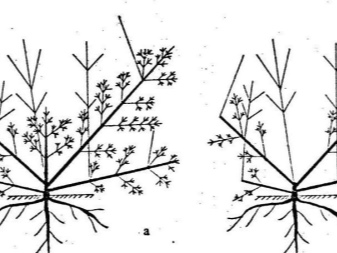
Beautiful examples
Designers use honeysuckle honeysuckle in the landscape in single plantings and in combination with other species. Decorative climbing shrubs cover the bare walls and make the patio cozy, filling empty spaces near the fence or outbuildings. The tree liana is quite plastic, it can grow on a support of any shape and height, some gardeners grow it in a flower garden: looks so great during flowering in late spring and early summer.
-
Single placement.

- Honeysuckle in landscape composition, surrounded by other ornamental shrubs.

- The plant of various varieties is used to create a border and decorate a wall.
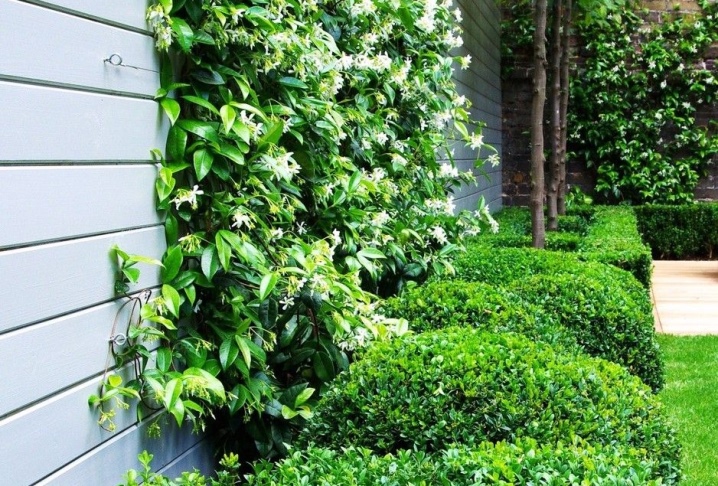
- A green gazebo covered with a foliage tent.

- Decoration of the entrance group: a climbing shrub creates a living arch above the porch.

- Picturesque green columns on the walls in a country residence.
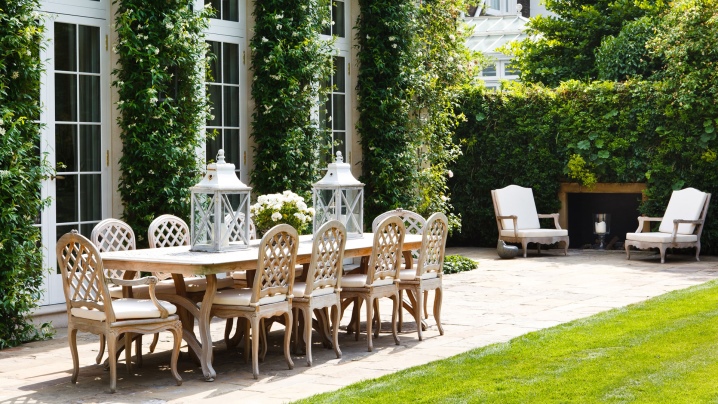
- Blooming liana near the house, next to it there is a hanging planter with geraniums.
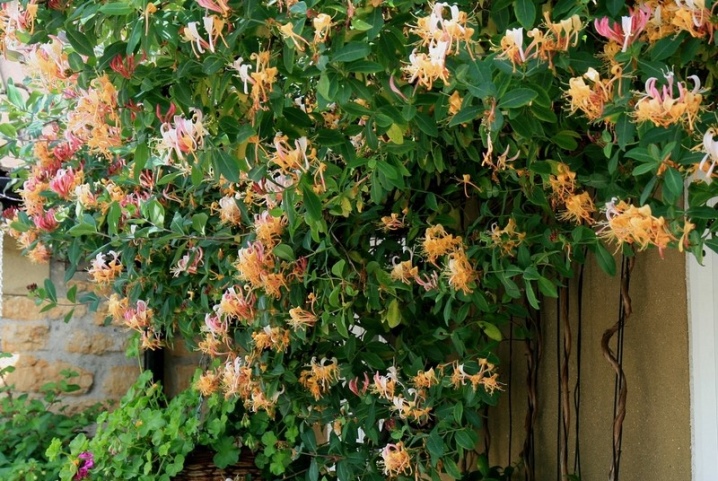
- A lush bush on a small trellis divides the patio into two zones.

- Pergola, entwined with a whip with flowers.

- Near the gazebo, a wooden fence is used as a support.
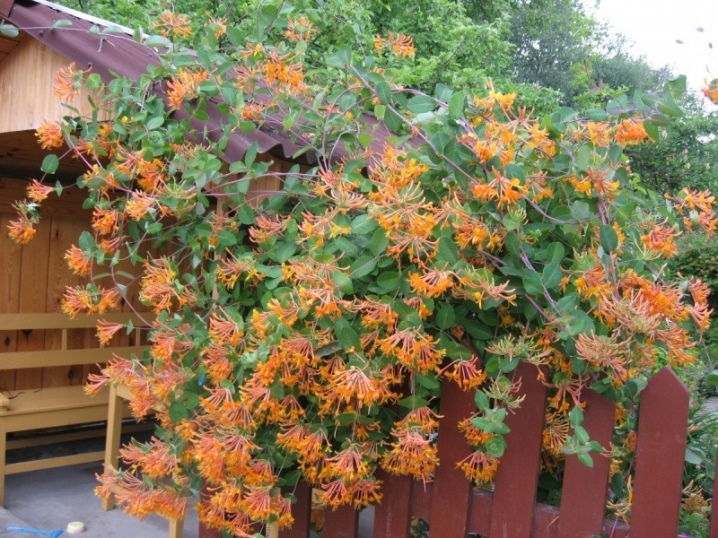
- A hedge trimmed in a rectangular shape.
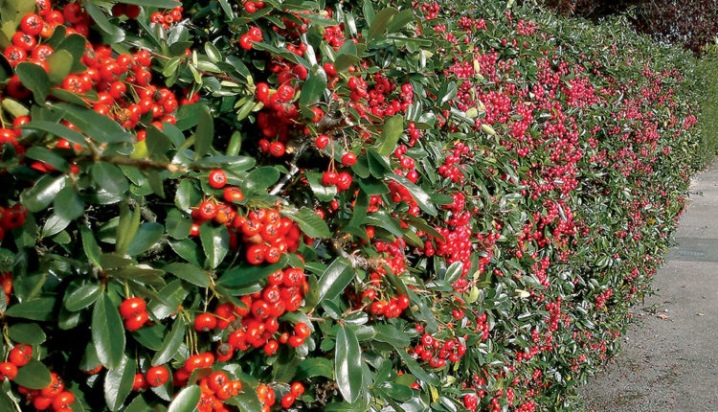
- Bushes with white and pink flowers are planted along the stone wall.
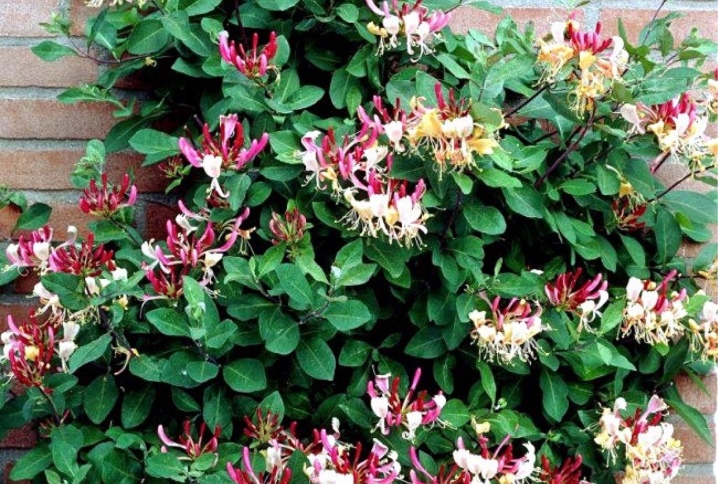
- A very young plant adorns the corner of the stone structure.
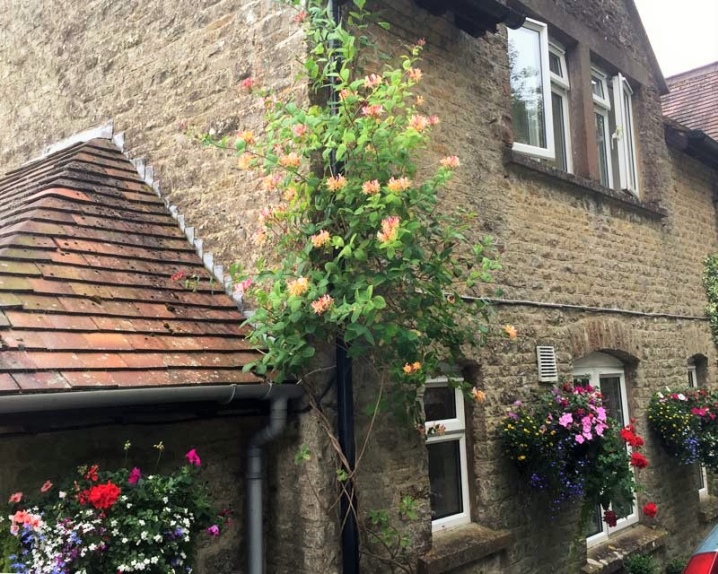
- Gallery of several arches entwined with greenery.
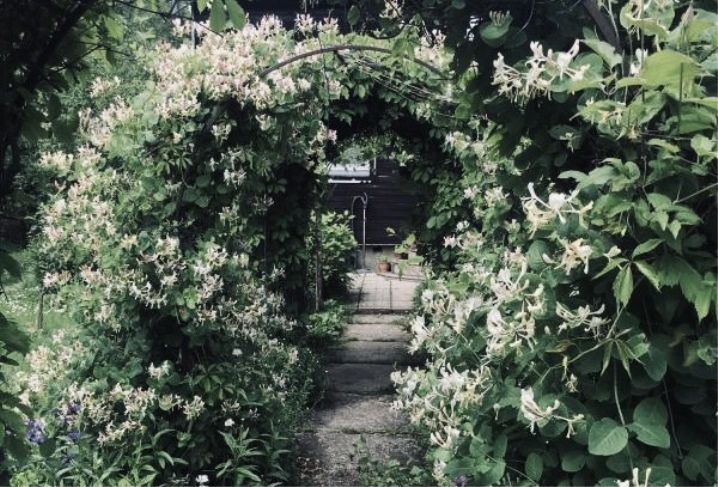
- Combination with conifers.
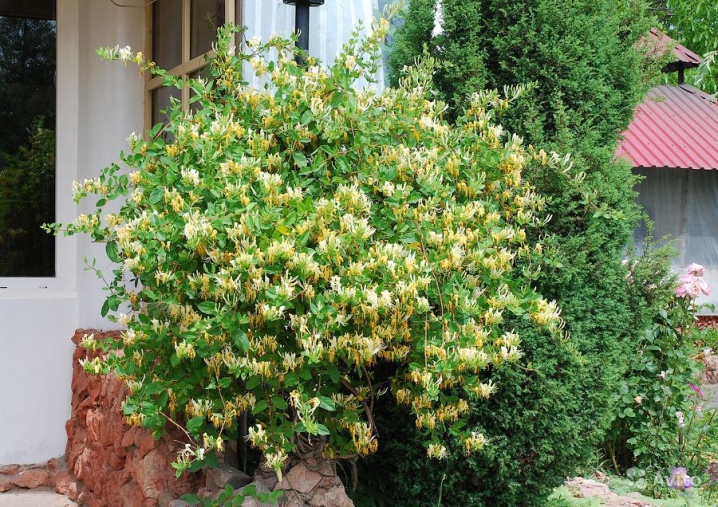
- A miniature specimen in a container on the terrace.









The comment was sent successfully.